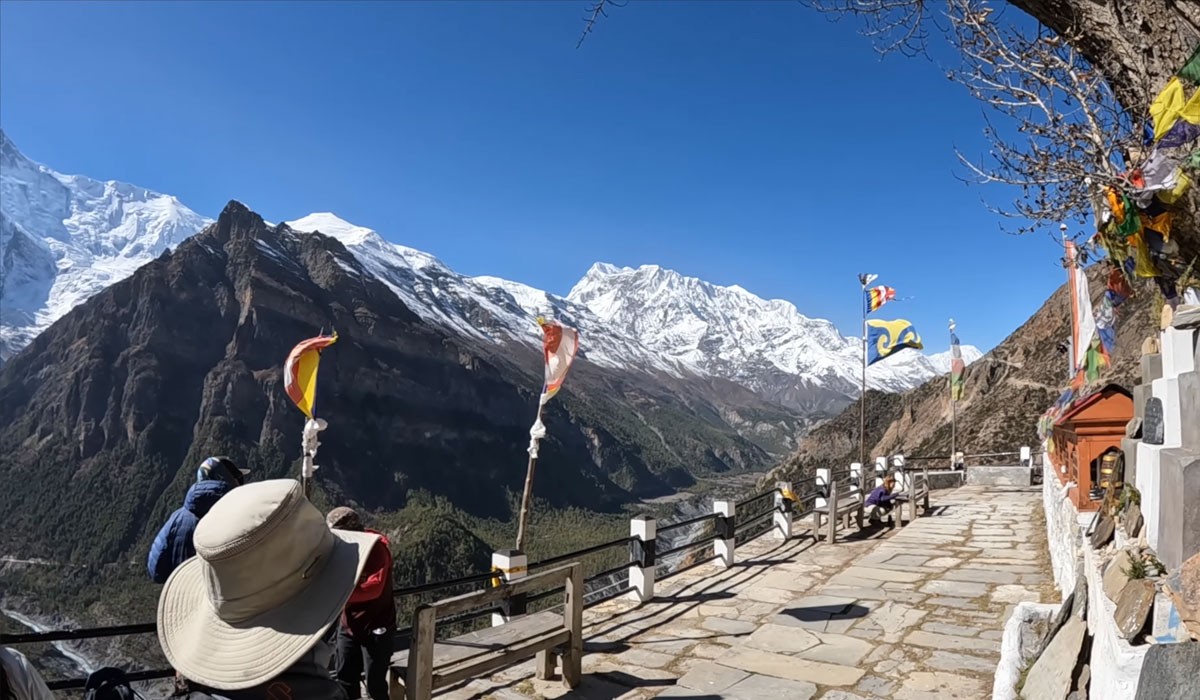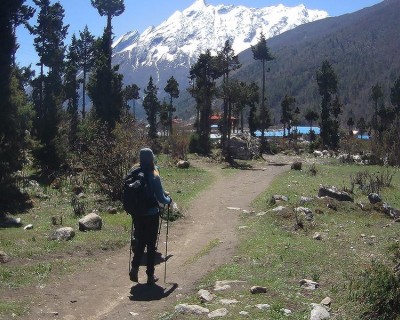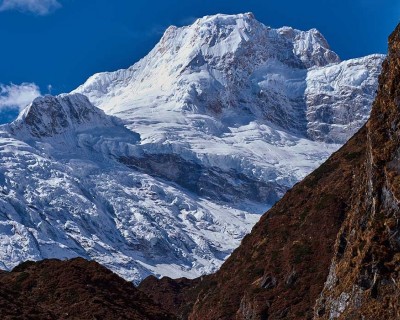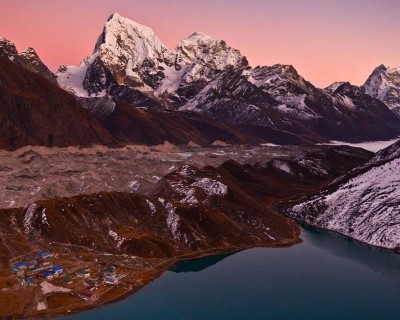Standard Trekking Package Overview - Annapurna Circuit Trek in November
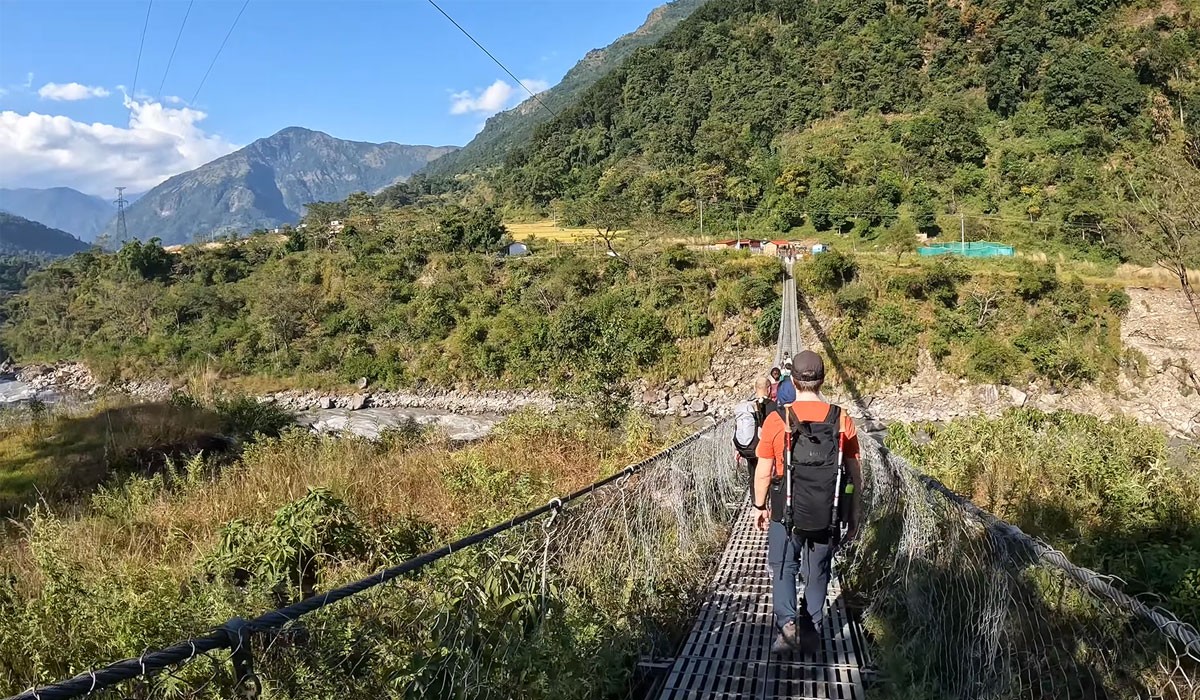
In your classical Annapurna Circuit Trek in November, the adventure kick starts with a scenic drive from Kathmandu (1,400 meters) to Ngadi (930 meters). Then, starting your trek here, you will move along the suspension bridges, waterfalls, and forest to Chamje (1,410 meters).
The trekking trail then further leads you across the Bagarchhap (2,160 meters), Chame (2,710 meters), Lower Pisang (3,240 meters), and finally to Manang (3,540 meters), your acclimatizing destination. After acclimatizing properly, you will then head toward the high elevation points in this circuit trekking route, like Yak Kharka (4,120 meters), Through Phedi (4,560 meters and the highest point in the trek Thorong La Pass (5,416 meters).
From here, your circumnavigating route descends alongside Muktinath (3,802 meters), Tatopani (1,190 meters), Ghorepani (2,750 meters) for a hike to the popular hill station in the Annapurna region, Poon Hill (3,210 meters). Then, after descending to Ulleri (2,050 meters), you will drive back to Pokhara (823 meters) in a comfortable vehicle. Your drive back to Kathmandu from Pokhara the next day will officially mark the end of your circuit trekking adventure.
Highlights of Annapurna Circuit Trek in November
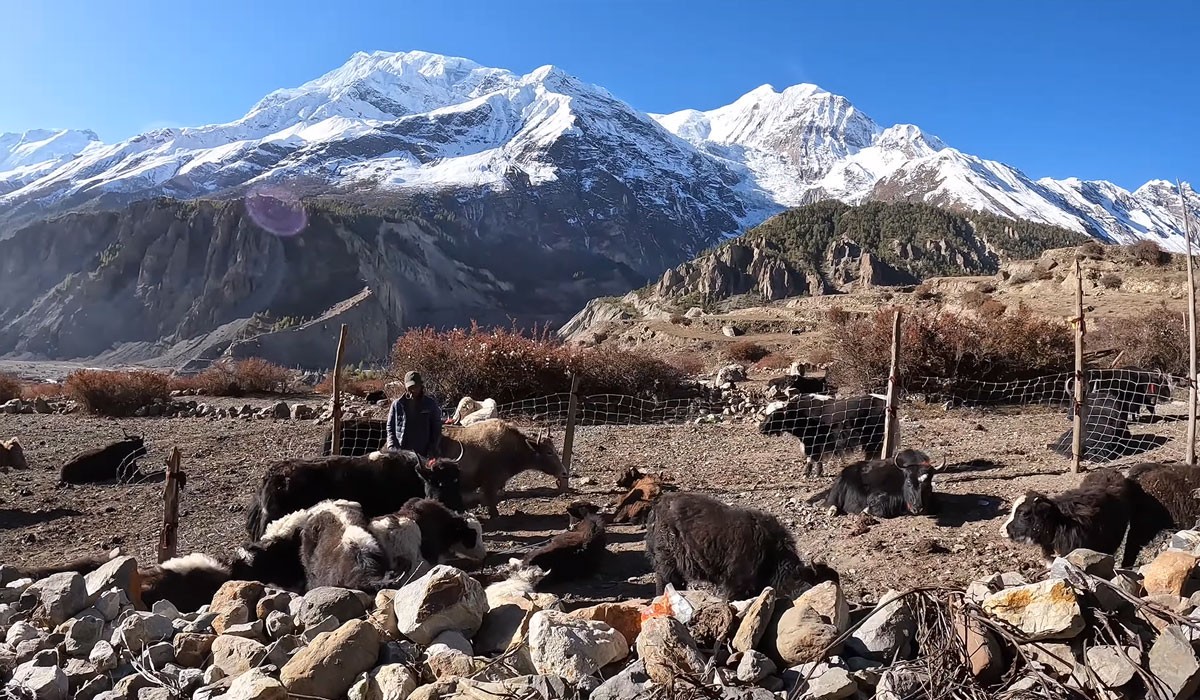
Favorable Weather Condition
Annapurna Circuit Trek in November introduces you to stable climatic conditions that are best suited for outdoor trekking adventures. The temperature of the region averages between 10°C to 24°C during November; you will generally trek in ideal climatic conditions that are neither too hot nor too cold.
The morning and evening are also greeted by cool breezes that are not chilly. However, as this month is close to the winter (December to February), there might be occasional snowfall at the alpine altitude during the latter part of the month. So, make sure you are prepared for every kind of climatic condition during your Himalayan adventure.
Incredible Mountain Views
The autumn season is generally popular for the clear and crisp views of the Himalayan vistas. While following the Annapurna Circuit Trek route, you will be rewarded with spectacular views of the Himalayan massifs, like Annapurna, Dhaulagiri, Machhapuchhre, Manaslu, Chulu Peak, Tukuche Peak and other adjacent peaks.
So, during your November excursion, you will be able to catch the most stunning views of these magnificent peaks. Due to the light snowfall over the peaks during the late part of this month, the views of the Himalayan peaks are even more prominent as they start showcasing their true magnificence.
Dry Trekking Trails
The trails of this circuit trek during November are generally dry. You will traverse across the alluring landscapes that boast different shades of the fall season and create stunning visuals. Due to the stable trails, the trekking experience becomes more comfortable and enjoyable this month.
The rivers and streams are easier to cross during the month, and there is also a reduced risk of landslides. Furthermore, you will also have easy access while overcoming the high Himalayan pass, Thorong La Pass, in this adventure, thanks to the absence of seasonal obstructions and challenges.
Less Crowd
The months in the autumn season generally receive a lesser number of trekkers than the spring season. The crowd is especially lower during the month of November as the winter season is at the doorstep. This opens up a perfect opportunity for you to experience this incredible circuit trekking adventure in solitude.
You won’t have to rush with interactions with locals or your leisure time at the teahouses. You can also take it easy at the trekking trails and enjoy a more intimate connection with nature. The quieter atmosphere in the region will guarantee a more serene experience and elevate the chances of encountering the endangered wildlife of the region.
Festivals
Nepal follows the lunar calendar system Bikram Sambat, so it is normal for festivals to shift to the neighboring months. Some of the incredible festivals in the country, like Tihar (Deepawali or Yamapanchak), Chhath, Indra Jatra, Kartik Purnima (Dev Deepwali), Mani Rimdu, etc share the vicinity with this month.
Even among all other festivals celebrated in the country, these festivals are oustand others due to their unique vibrance. So, if timed right, you can add an incredible cultural experience to your Himalayan trekking package.
Challenges of Annapurna Circuit Trek in November
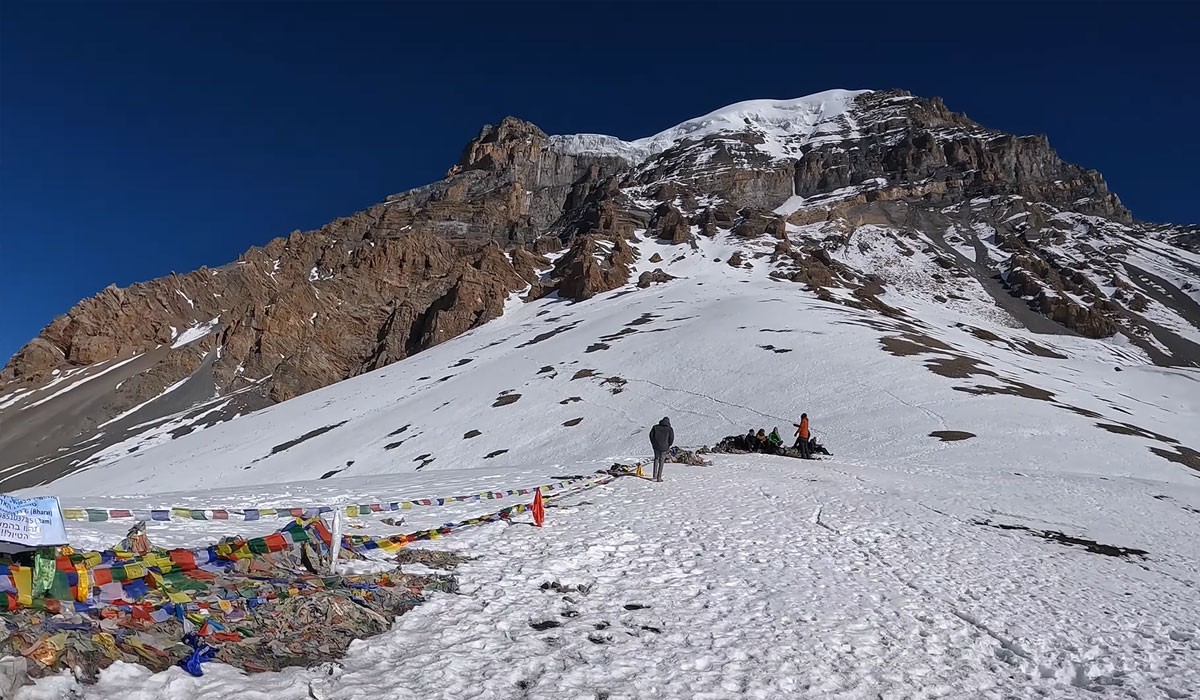
The Annapurna Circuit Trek in November introduces you to the slow transition of the autumn to winter phase at high altitudes. Although this circuit trekking adventure is graded as a ‘moderate’ exploration, you will have to keep an eye out for some of the challenging hurdles of this month during your trek.
Beginning your trekking adventure from Ngadi (930 meters), in this adventure, you will reach the highest elevation point in the alpine environment, Thorong La Pass, at 5,416 meters (17,769 feet). The excursion over this high Himalayan pass can be slightly chilly if you are doing the trek during the later-November. So, you will need to acclimatize properly, as an effective acclimatization process can be slightly challenging in cold climatic conditions.
Similarly, the trekking distance of this circuit trekking adventure is approximately 160 to 230 km (100 to 145 miles). During the trekking part, you will cover the trekking trail equivalent to 6 to 7 hours on average. Trekking on remote and rugged trails at increasing altitudes can be slightly vexing if you haven’t trained properly.
Still, the challenges in this adventure are milder than other remote high-altitude treks. You won’t require any technical skills or prior experience to take part in this exploration. Even a complete beginner can complete this trek with enough preparation.
Is Annapurna Circuit Trek in November Right for Me?
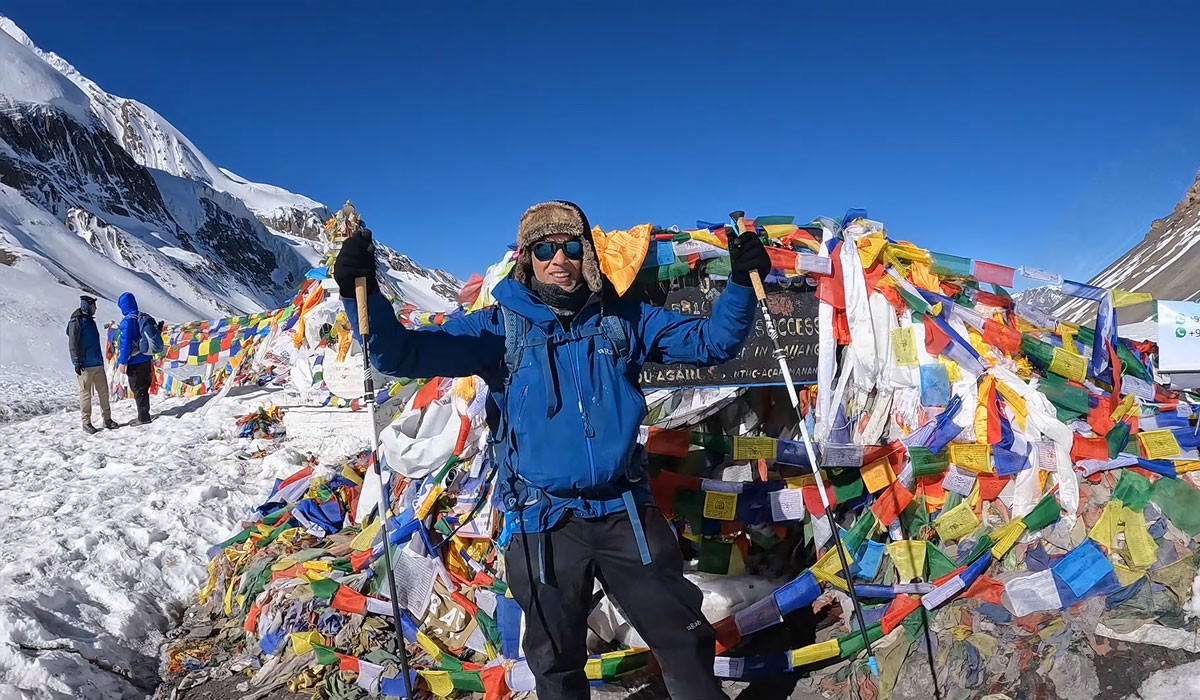
Annapurna Circuit Trek is an incredible Himalayan venture that takes your charming trails of the mainstream Himalayan trekking region. This unique Himalayan adventure, which is a unique mixture of both cultural and natural prospects, is something you should definitely try at least once in your life.
However, if you are worried about the difficulty level of this adventure,you can rest assured; this circuit trek is a milder Himalayan exploration. You will get enough rest period during the long days of trek, and of course, you will go through an effective acclimatization process to adapt properly to the rising altitude.
The success rate of this exhilarating Himalayan adventure sits at 98% to 100%, so there are hardly any chances for failure in this adventure if you make the preparations right. There aren’t any official age restrictions for this trekking route either; if you have a basic level of fitness and good health, then you are good to go. In case of any health-related concerns, you can consult your doctor and the trek guide for advice.
How to Prepare for the Trek?
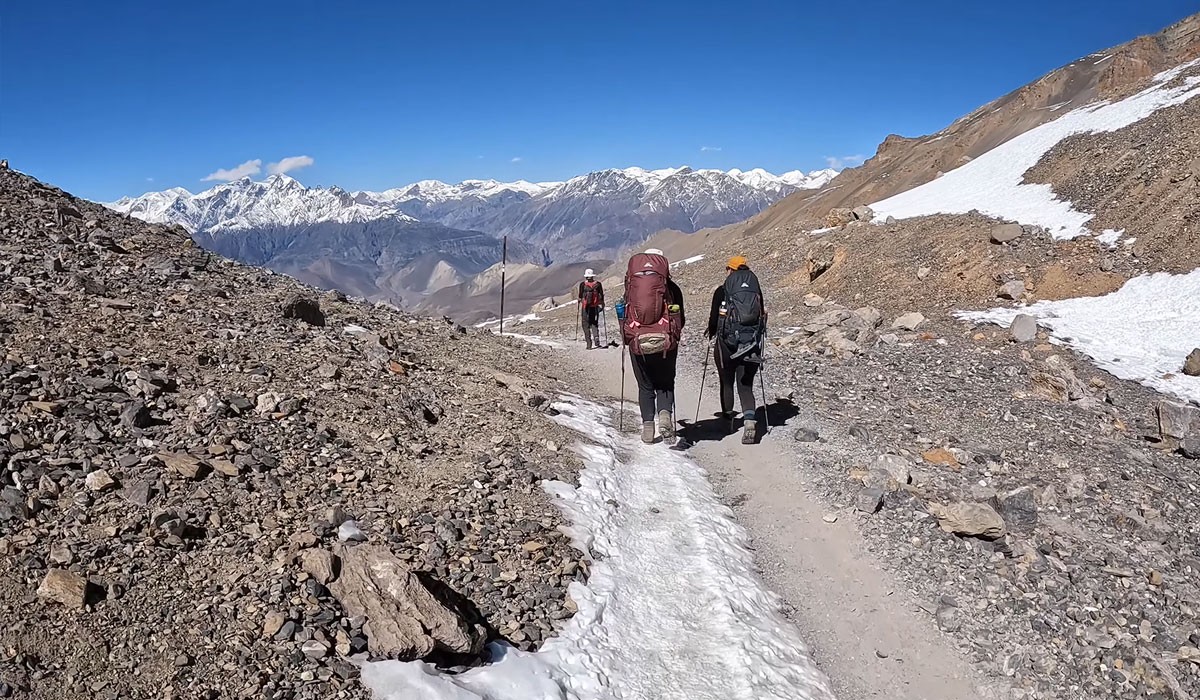
The Annapurna Circuit Trek in November is certainly a rewarding exploration. However, if you are planning your trek in this month, you should make an adequate effort to enhance the overall experience. The most effective way to prepare for the adventure in this month is to start preparing at least 3-6 weeks before the actual trek so that your body will get accustomed to the physical activity.
If you are an athlete or a person who exercises routinely, you may not be required to allocate significant hours from your daily period for training. However, if are not that physically active, you can design the training program after a thorough physical assessment.
The Annapurna Circuit Trek is known for the steep sections along the trekking trail; you will have to overcome several uphill and downhill segments as you move along your route. On top of that, you will have to carry your baggage, so your strength and endurance level are the vitality of the adventure to determine your comfort level.
Cardiovascular/Stamina Exercises: Jogging, swimming, dancing, jumping rope, jumping jack, rowing, high knees, mountain climber, etc
Strength Exercises: Squat, bicep curl, deadlift, push-up, plank, bent over row, upright tow, pull-up, bench press, lunge, leg extension, etc
What Permits Do You Need for the Trek?
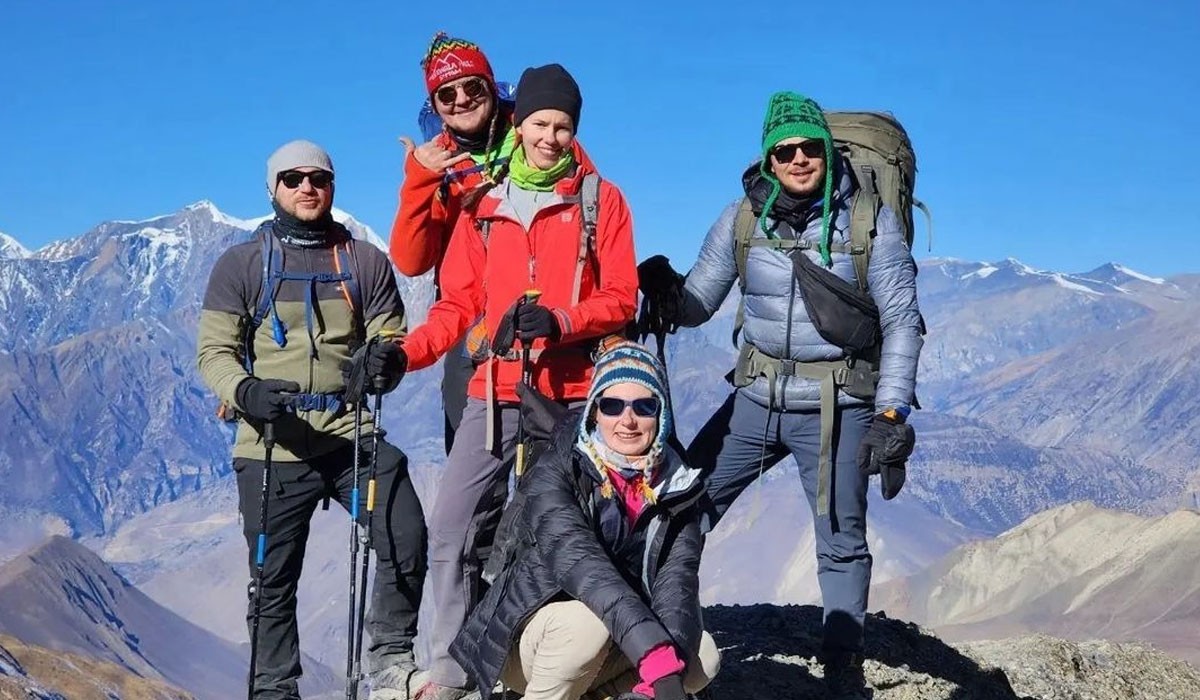
You will have to obtain permits for the Annapurna Circuit Trek in November.
- Annapurna Conservation Area Project (ACAP)
- Trekker’s Information Management System (TIMS) Card
Both of these permits are mandatory for doing this high-altitude trekking adventure in the Annapurna region. As you will traverse across the protection area of the region Annapurna Conservation Area Project Permit is necessary; it costs around US$ 25.
As for the Trekker’s Information Management System (TIMS) Card, it enhances the security features and keeps track of the whereabouts of trekkers. With the help of this card, authorities can immediately initiate search and rescue operations in case of mishaps or emergencies. The cost of a TIMS Card is around US$ 18.
You will be able to obtain both of these permits easily from the Nepal Tourism Board offices located in Kathmandu, Pokhara, and the entry permit counter at Besishar. You will need to present the following documents to get the necessary permits for this trek:
- Passport sized photographs (2 nos)
- Copy of your valid passport
- Copy of your travel visa
- Policy number of your travel insurance
- Emergency contact address both in Nepal and your home country
Cost of Annapurna Circuit Trek
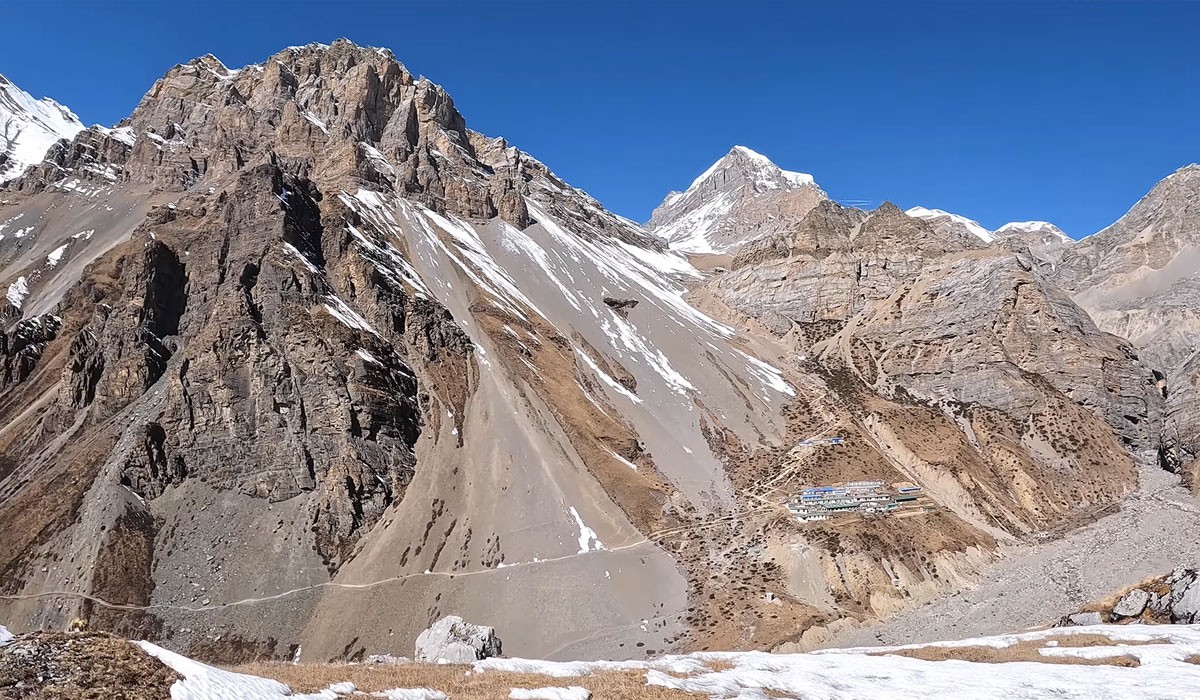
The cost of the Annapurna Circuit Trek ranges between US$ 1,100 to US$ 4,500. The package cost varies depending on the duration of the trek, itinerary, plans, service, amenities, and side detours. We here at Marvel Adventure offer the standard 14 Days Annapurna Circuit Trek package at just US$ 1,225.
This is the best value package and a top market contender in the segment. You can relish a fully immersive experience with this package as explore some popular highlights around the region besides the classical route. Here are a few other packages that you can choose from for a remarkable adventure in November.
Your circuit trek package cost will include all the general expenses of the adventure, like pick-up & drop-off, meals & accommodation during the trek, other land transport, permits & entrance fees, as well as government expenses and our service cost.
However, the expenses of your international flight, visa, tips, and other personal-natured expenses are not covered by your Annapurna Circuit Trek cost.
What Kind of Food and Accommodation Can You Expect?
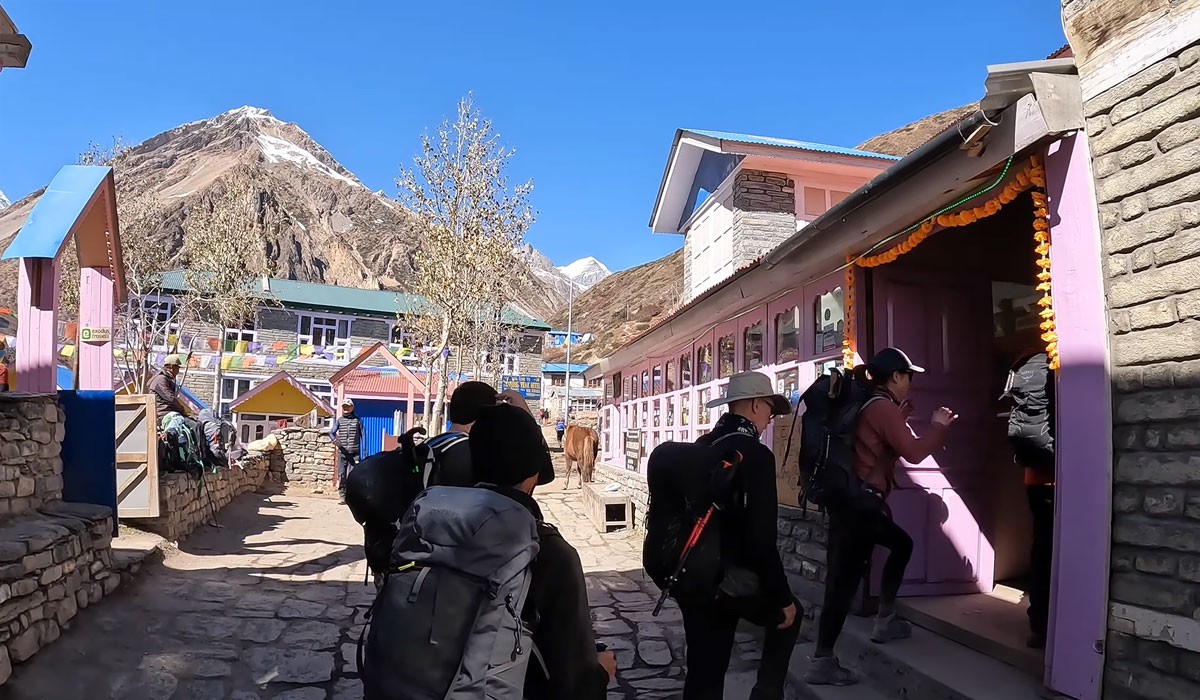
Annapurna region is a top choice when it comes to a comfortable and enjoyable Himalayan trekking experience. But, its growing popularity is not just because of the incredible heart-melting beauty of the region, but it is also thanks to delightful cultural delicacies that represent the whole nation.
So, in this single trip, you will also be able to relish a diverse range of tasty dishes that represent different cultures and ethics groups in the country. But the menu isn’t limited to just that either; you can also enjoy other Asian cuisines and Western menus with unique Nepali touches and bursting flavors.
If you are a vegetarian or vegan and worried about meal options for you during the trek, both of these options are available at the teahouses. You can also personally request the chef not to include the ingredients you don’t prefer or that you are allergic to.
Menu for Breakfast: Toast, Plain Bread, Eggs, Jam, Butter, Jeri Swari, Sel Roti, Malpa, Paratha, Chapati, Oats, Cornflakes, Pancake, Muesli, Pudding, Salad, etc
Menu of Lunch and Dinner: Dal bhat, Momo, Chowmein, Gundruk, Dhindo, Thuka, Tingmo, Shyaphale, Fries, Pizza, Pasta, Spaghetti, Pasta, Steak, Soup, etc
Packing for Annapurna Circuit Trek in November
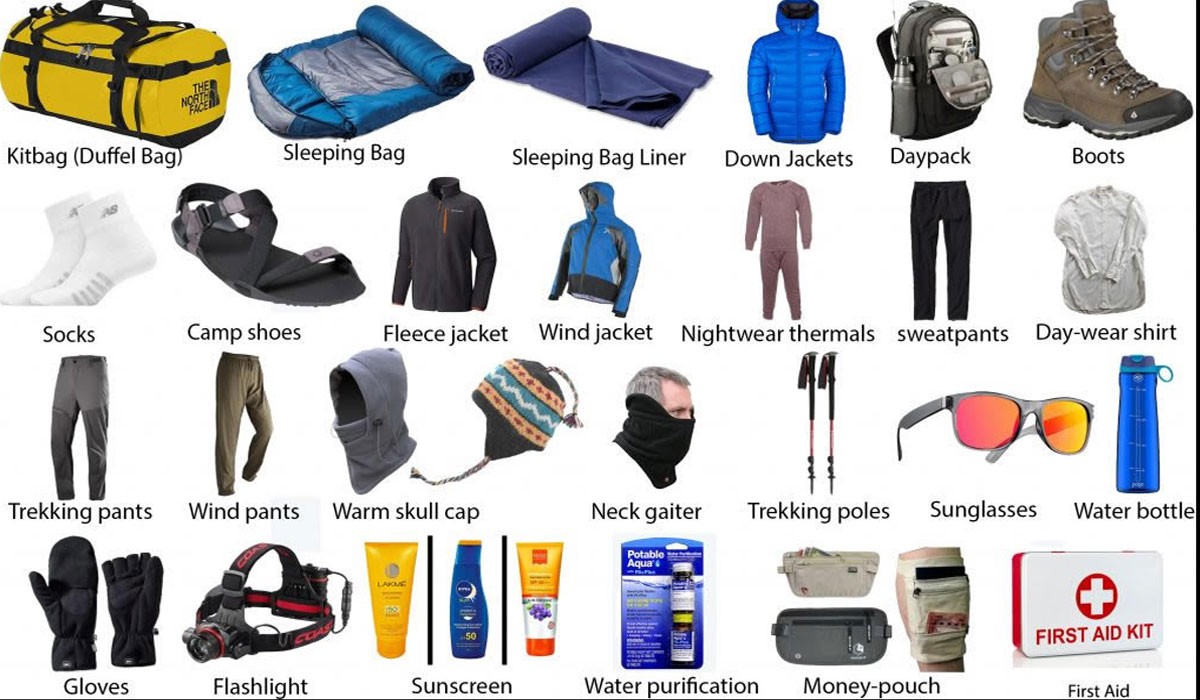
During the latter part of November, the higher alpine altitudes start seeing a little bit of snowfall as the winter approaches. So, to tackle the dropping temperatures at higher altitudes, you will need to pack proper clothes and gear for the adventure.
The weight limit for a porter in a standard trekking package is about 15kg per trekker. So, you will have to carry the extra luggage on your own during the trek. So, you have to optimize your packing list for the trek without missing essentials and going way overboard the set limit.
Packing for Head and Upper Body: Sunblock hat, beanie, woolen hat, neck gaiter, scarf, light t-shirt (half and full), thermal or insulated inner layers, windproof/ waterproof outer layer, fleece jacket, sweater, down jacket, light gloves, insulated or woolen gloves etc
Lower Body: Cotton pants, woolen trousers, windproof and waterproof trousers, shorts, trekking boots, sports shoes, sandals, socks, gaiter, etc
Personal Hygiene: Toothbrush, toothpaste, soap, shampoo, lotion, sunscreen cream, tissue and toilet paper, foot powder, bug repellant, sanitizer, etc
Equipment/Gear: Sleeping bag, duffle bag, trekking poles, headlamp, binoculars, power bank, map and gps, thermos bottle, entertainment set, etc
As there are no ATM facilities available on the trekking route, you are recommended to exchange enough cash for local currency. You will need money for snacking and shopping for your favorite souvenirs.
Health and Safety
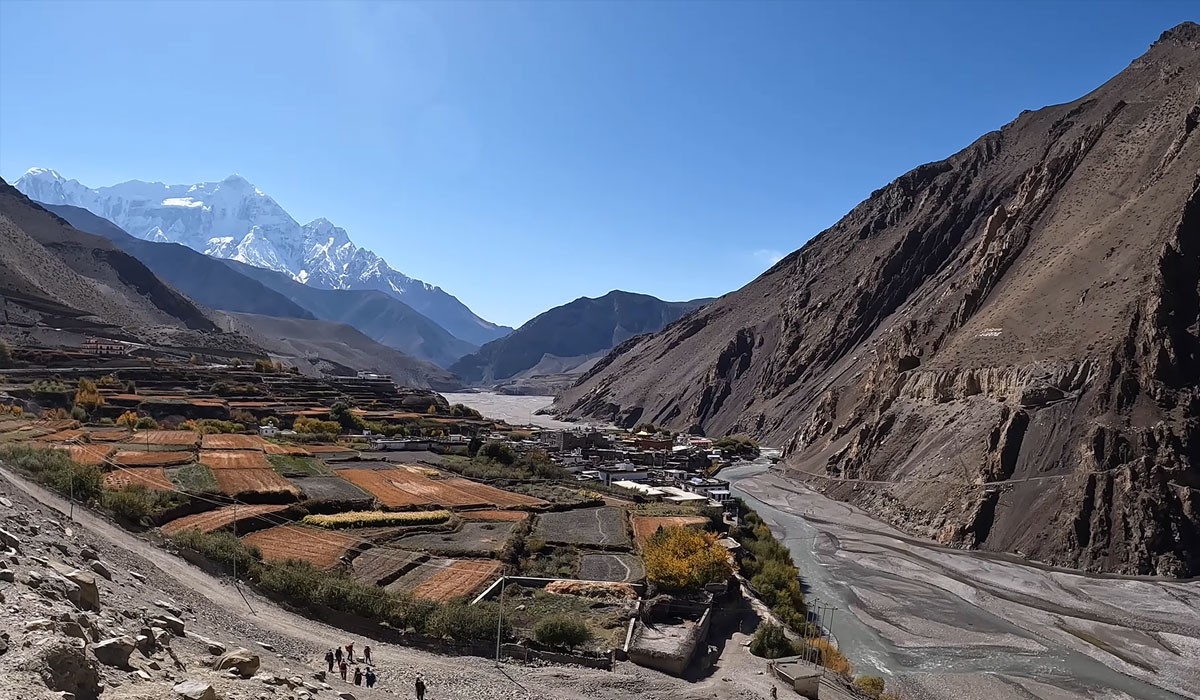
A government-licensed and expert guide in the region will oversee your exploration of the Annapurna Circuit Trek in November. Your physical status and oxygen saturation level in your body will checked every day of your adventure. Our guides are also trained in first aid and high-altitude response, so this factor will certainly enhance the safety of your trip.
Your safety and comfort are our top priority, so will ensure that you have an enjoyable experience without worrying about anything. To prevent altitude sickness, the trek is designed for slow walking so you can acclimatize while moving along with your trekking route. Plus, you will also get enough acclimatization days for the route.
In case of emergencies, your guide will properly coordinate with our head office in Kathmandu to take the necessary steps. We also provide supplementary oxygen bottles for an extra cost if you feel like you need them at high altitude points.
Some Helpful Tips for Trek in November
- Pack warm layers as the high-altitude temperatures gradually start to drop by the end of the month
- Take it slow and drink enough water during the trek (you can also pack electrolytes)
- Understand the risks of altitude sickness and pay attention to symptoms related to it
- Eat a balanced diet, and don’t skip your meals even if you feel the loss of appetite at high altitudes
- Your fitness level will determine the enjoyability scale, so do train adequately, minding the recommended period
- Avoid cigarettes and alcohol at any cost during the trek; they can complicit the acclimatization process
- Don’t forget to pack altitude medications like Diamox
- Communicate with your guides properly for any inconveniences or difficulty
- Follow the instructions and suggestions of your guide properly
- Research about your destination, get insider tips from experienced trekkers
